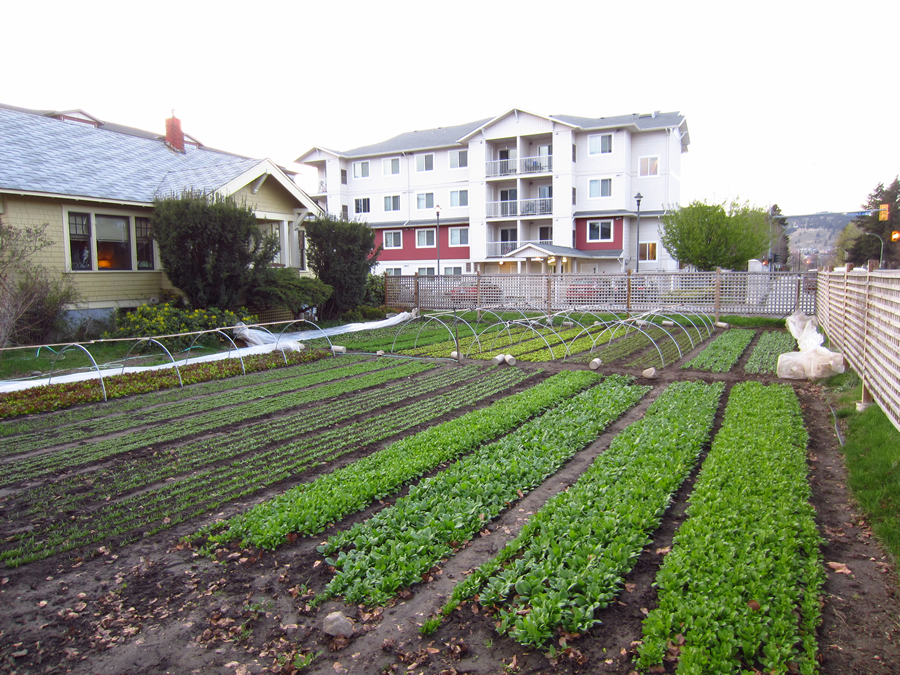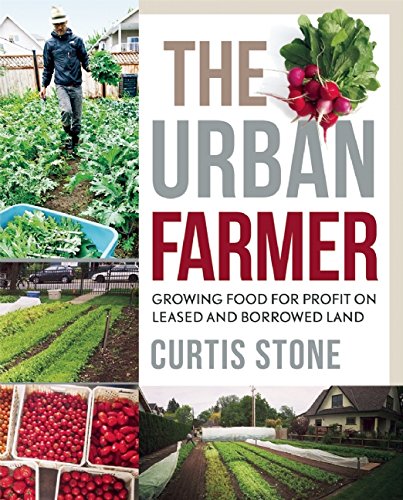There are 40 million acres of lawns in North America. In their current form, these unproductive expanses of grass represent a significant financial and environmental cost. However, viewed through a different lens, they can also be seen as a tremendous source of opportunity.
Access to land is a major barrier for many people who want to enter the agricultural sector, & urban & suburban yards have huge potential for would-be farmers wanting to become part of this growing movement.
Musician turned urban farmer, Curtis Stone the owner/operator of Green City Acres, runs an urban farm based out of Kelowna, BC. Green City Acres farms under an acre of land spread out amongst seven different urban plots to grow vegetables for various direct consumer markets throughout Kelowna. All transport is accomplished using only bicycles and custom built trailers. Having no prior experience as a farmer or gardener, Curtis started his farm simply out of a desire to be more autonomous, and to make a living by the triple bottom line principle.
In 2015…
- Curtis farmed 5 different plots giving him a total of 15,000sq.ft (1/3 Acre) to farm on.
- He produced 17,500lbs of total product.
- He produced 23 different products (individual products and mixes included).
- Biggest Crops by Sales Dollars:
- 1. Spring Mix – $22,000
- 2. Tomatoes – $11,000
- 3. Arugala
- 4. Salad Turnips
- 5. Radishes
- Those crops made up over half of the farm production in dollars.
- Biggest Crops by Weight:
- 1. Tomatoes – 3000lbs.
- 2. Radishes – 2600lbs.
- 3. Spring Mix – 2500lbs.
- 4. Salad Turnips – 2000lbs.
- 5. Carrots – 1000lbs.
You can check out a presentation by Curtis on urban farming below…
And here is a tour of his urban farm…
And if you’re interested in getting into urban farming yourself (or just growing a more productive self sufficient garden for your family) you should also check out his new book…
The Urban Farmer is a comprehensive, hands-on, practical manual to help you learn the techniques and business strategies you need to make a good living growing high-yield, high-value crops right in your own backyard (or someone else’s). Major benefits include:
- Low capital investment and overhead costs
- Reduced need for expensive infrastructure
- Easy access to markets.
Growing food in the city means that fresh crops may travel only a few blocks from field to table, making this innovative approach the next logical step in the local food movement. Based on a scalable, easily reproduced business model, The Urban Farmer is your complete guide to minimizing risk and maximizing profit by using intensive production in small leased or borrowed spaces. Find out more here.
If you like this idea, be sure to share it with your friends and inspire someone you know. Anything becomes possible with just a little inspiration…


